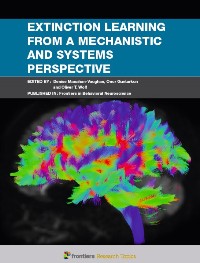2016-08-22

Throughout life, we learn to associate stimuli with their consequences. But some of the new information that we encounter forces us to abandon what we had previously acquired. This old information is then subject to a new learning process that is called extinction learning that is extremely complex and involves a large number of brain structures. To provide a most recent update on research on extinction learning, Denise Manahan-Vaughan, Onur Güntürkün and Oliver Wolf from the Ruhr-University came together to create an open-access Frontier Research Topic e-book. Their publishing strategy departed from the formulation of three aims: First, the e-book should incorporate studies that analyze the concert of neural structures that enable extinction learning. Second, the book had to include papers that are situated at the transition between basic and clinical neuroscience. Third, the book should cover papers on the uncharted territories of extinction learning, involve less-studied entities such as the immune system or hormonal factors, or less-studied species or novel paradigms. Last but not least, the book had to have a stunning cover. This was achievedwWith the support and the courtesy of Erhan Genç (see yourself). A very large number of leading international scientists contributed to this book and turned it into a huge success. As a result, the e-book offers brand new and valuable insights into the mechanisms and the functional implementation of extinction learning at its different levels of complexity. It thus also forms the basis for new concepts and research ideas in this field. The book can be downloaded for free here.

Throughout life, we learn to associate stimuli with their consequences. But some of the new information that we encounter forces us to abandon what we had previously acquired. This old information is then subject to a new learning process that is called extinction learning that is extremely complex and involves a large number of brain structures. To provide a most recent update on research on extinction learning, Denise Manahan-Vaughan, Onur Güntürkün and Oliver Wolf from the Ruhr-University came together to create an open-access Frontier Research Topic e-book. Their publishing strategy departed from the formulation of three aims: First, the e-book should incorporate studies that analyze the concert of neural structures that enable extinction learning. Second, the book had to include papers that are situated at the transition between basic and clinical neuroscience. Third, the book should cover papers on the uncharted territories of extinction learning, involve less-studied entities such as the immune system or hormonal factors, or less-studied species or novel paradigms. Last but not least, the book had to have a stunning cover. This was achievedwWith the support and the courtesy of Erhan Genç (see yourself). A very large number of leading international scientists contributed to this book and turned it into a huge success. As a result, the e-book offers brand new and valuable insights into the mechanisms and the functional implementation of extinction learning at its different levels of complexity. It thus also forms the basis for new concepts and research ideas in this field. The book can be downloaded for free here.